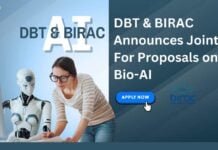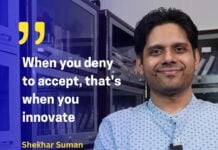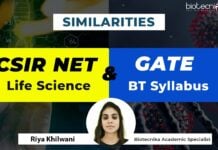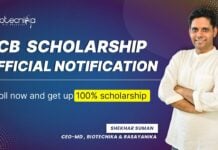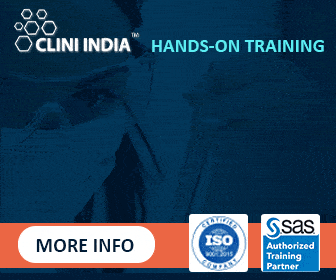Presidency MSc JRF Walk-In – Life Sciences Candidates Eligible
Presidency MSc JRF Walk-In – Life Sciences Candidates Eligible. Junior Research Fellow vacancy. JRF job openings for MSc Life Sciences. Interested and eligible applicants can check out all of the details on the same below
Hey if you are interested to learn of some possible interview questions for the role of JRF at Presidency University, then make sure to check the bottom of the page.
This job expires in
Advertisement Inviting Applications for position of JRF in DST-SERB Funded Research Project at the Department of Life Sciences Date: 28/08/2023
Applications are invited for the position of Junior Research Fellow (JRF) in DST-SERB funded research project entitled “Biology of adult aortic valve calcification: A twisted battle between homodimer and heterodimer formation and their therapeutic implications” at the laboratory of Dr. Santanu Chakraborty, Department of Life Sciences, Presidency University, College street campus, Kolkata.
Name of the Post – Junior Research Fellow (JRF)
No. of Posts – 01
Title – “Biology of adult aortic valve calcification: A twisted battle between homodimer and heterodimer formation and their therapeutic implications”
Name of the PI – Dr. Santanu Chakraborty
Duration of project: Appointment will
be for 3 years or till end of the project, and subjected to annual review for further extension that will be granted based on the research progress and accomplishments.Application process: The interested candidate must email the following documents (preferably in a single PDF file) to [email protected] by 2nd September 2023.
a. Updated CV with contact details and percentage of marks from secondary onwards, research experience, publications and latest passport size photograph.
b. Scanned copies of B.Sc. and M.Sc. certificates.
c. UGC/CSIR NET score cards or qualification certificates.
Interested applicants should report 30 minutes before the scheduled time of the interview & submit the following documents:
Two separate sets of:
- Application in plain paper addressed to the undersigned
- Two copies of updated CV along with attested copies of all relevant testimonials
The original certificates and mark sheets are to be presented before the Selection Committee on the day of the interview. Applicants arriving 30 minutes after the scheduled time of the interview shall not be called for the same.
- Date of interview: September 04 (Monday), 2023
- Place of interview: Conference Room, Department of Life Sciences (Baker Building), Presidency University, 86/1, College Street Campus, Kolkata-700073, India.
- Time of interview: 12:00 Noon. The candidates are requested to reach the venue by 11:30 am.
Terms and conditions:
- All the terms and conditions for this recruitment will be as per the guidelines for the DST-SERB and Presidency University Kolkata.
- The above position is purely contractual and is for the duration of the project only. Selected candidates will not be entitled to claim any regular appointments/absorption in this institute.
- No TA/DA will be paid for attending the interview.
- Canvassing in any form will disqualify the candidature
For further details please contact:
Dr. Santanu Chakraborty (Principal Investigator)
Heart Development & Disease Laboratory
Assistant Professor
Department of Life Sciences
Baker Building,86/1, College Street, Kolkata 700073
Email: [email protected].
Web-Page: http://www.presiuniv.ac.in/web/staff.php?staffid=131
Essential Qualification:
- a) First class M.Sc . Degree in any area of Life Sciences from a recognized university and
- b) a valid rank in the UGC/CSIR NET JRF examination.
Desirable Qualification: Applicants having at least 1 year of research experience in mammalian cell/tissue culture, basic microscopy and molecular biology techniques.
Salary: As per DST, Govt. of India guidelines.
- Rs. 31,000 plus 24% HRA/month (1st and 2nd year as JRF)
- Rs. 35,000 plus 24% HRA/month (3rd year as SRF)
Here are five possible interview questions that can be asked in the technical round for the job, along with their answers:
- Can you provide an overview of your research experience in mammalian cell/tissue culture, basic microscopy, and molecular biology techniques? How have you applied these skills in your previous projects? Answer: In my previous roles, I have worked extensively with mammalian cell and tissue cultures, performing experiments to understand various biological processes. I have used basic microscopy techniques to visualize cellular structures and behaviors. Additionally, I have employed molecular biology techniques like PCR and gene expression analysis to investigate molecular mechanisms. For example, I conducted a study where I cultured endothelial cells to investigate their response to different stimuli, combining cell culture and molecular techniques to explore signaling pathways.
- Could you elaborate on your familiarity with homodimer and heterodimer formation in the context of the project’s focus on adult aortic valve calcification? How might these interactions contribute to therapeutic implications? Answer: Homodimer and heterodimer formations involve the interaction of identical or different molecules, respectively. In the context of aortic valve calcification, these formations could influence the progression of the condition. For instance, specific interactions might promote or inhibit calcification. Therapeutically, understanding these interactions could guide the development of targeted interventions. By disrupting or enhancing certain interactions, we might influence the calcification process. This knowledge could lead to novel therapeutic strategies to manage aortic valve calcification.
- Could you describe a scenario where you faced challenges in your previous research projects and how you approached problem-solving to overcome them? Answer: In a previous project, I encountered challenges related to optimizing a cell culture protocol for a particular cell line. Cells weren’t proliferating as expected, affecting downstream experiments. I addressed this by thoroughly reviewing the literature, consulting colleagues, and making systematic adjustments to the culture conditions, such as media composition and incubation parameters. Through iterative testing, I managed to establish an optimal protocol that significantly improved cell growth, allowing us to proceed with the experiments successfully.
- In the context of working on a three-year project, how do you plan to ensure consistent research progress and stay focused on achieving milestones throughout the project’s duration? Answer: Maintaining consistent progress and meeting milestones in a long-term project requires careful planning and organization. I intend to break down the project into smaller phases, setting achievable goals for each. Regularly reviewing these goals and tracking progress will help ensure that I’m on track. I’ll also maintain open communication with my team and supervisor to discuss challenges, seek guidance, and make necessary adjustments. This proactive approach will allow me to address any deviations from the plan promptly and maintain steady research progress.
- Could you share an example of a project where you effectively collaborated with other team members, such as wet-bench biologists or computer programmers, to achieve research goals? How did you manage communication and coordination? Answer: In a collaborative project involving transcriptome analysis, I worked closely with both wet-bench biologists and computer programmers. To ensure effective communication, we scheduled regular meetings to discuss experimental design, data analysis plans, and interpretation of results. I provided the wet-bench biologists with insights into data analysis possibilities, while the programmers helped design customized scripts. This collaboration enhanced the project’s outcome by integrating biological insights with computational techniques, resulting in a comprehensive understanding of the gene expression changes we were investigating.
Editor’s Note: Presidency MSc JRF Walk-In – Life Sciences Candidates Eligible. Please ensure that you are subscribed to the Biotecnika Times Newsletter and our YouTube channel to be notified of the latest industry news. Follow us on social media like Twitter, Telegram, Facebook



